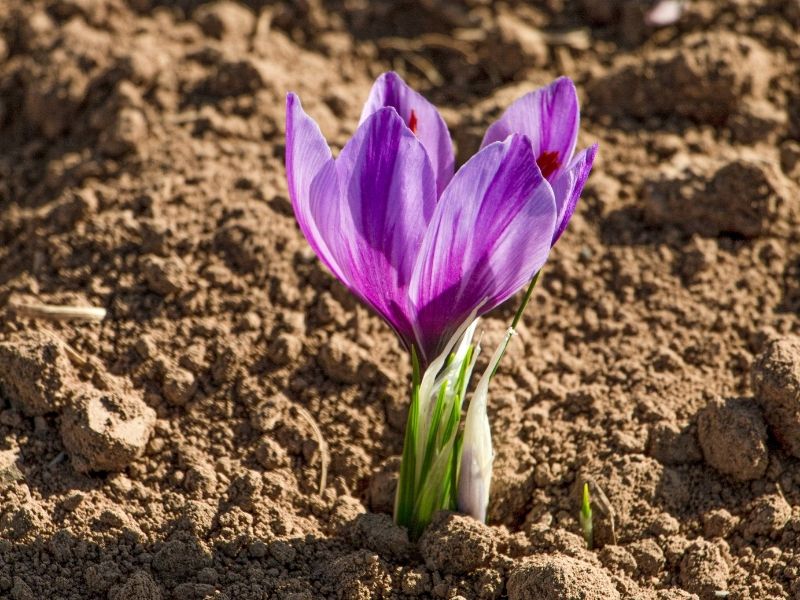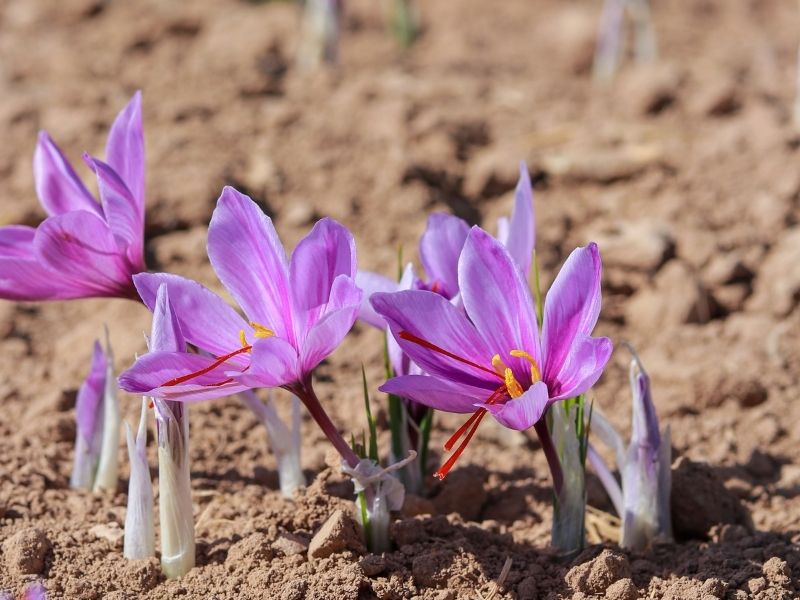Growing Saffron is surprisingly simple, as it thrives in zones six and above. You may also learn how to cultivate Saffron in zones 3-5 with a bit of care and attention!
The red thread-like stigmas of the saffron crocus are used to make the spice saffron (Crocus sativus). Only a few tiny threads are produced by each flower, and when dried, they weigh little. Saffron is the world’s most expensive spice for a reason: those tiny threads are very delicious.

A single gram of dried Saffron requires roughly 150 blossoms, and an entire field may only produce a pound or two in a season. You can see how the vivid crimson stigmas of this tiny purple blossom can fetch up to $10,000 per pound now.
The truth is that no one requires a pound of Saffron. A few threads or a tiny pinch of this potent spice are used to flavor recipes.
Growing Saffron at home is immensely rewarding, and all you need is a tiny patch to provide your family with the freshest, most flavorful Saffron you’ve ever tasted.

SAFFRON GROWING INSTRUCTIONS
Unlike other spring crocus flowers, Saffron crocus blooms in the fall. The plants are Mediterranean natives that fall dormant in the summer to withstand the dry, arid weather. Early in the fall, the bulbs develop greens before putting on a stunning display of purple blooms in the late fall.
Because the bulbs have a summer dormancy period, they are usually dug in the middle of the summer and shipped for late summer planting.
Although early September is a little late in Vermont, where the autumn season is frequently cut short by early winter, there was still time to harvest some homegrown saffron.
Plant the saffron bulbs in sandy, well-drained soil with a moderate amount of organic matter. Because our soils are clay-rich and rainy, I decided to plant Saffron in a raised bed. The soil is composed of sand (collected from the pond’s edge), compost, and a small amount of peat moss.
In that light growth medium, the Saffron thrived.
Saffron bulbs should be planted 3-4 inches deep and 3-4 inches apart. Because the bulbs will reproduce by producing new bulbs above the old ones, the depth is critical. There won’t be enough room for next year’s bulbs to develop if they’re planted too shallow.
The initial thin grassy leaves will grow a few weeks after planting.
The saffron crocus bulbs will produce several pale purple flowers after the foliage has grown. The number of blossoms a single bulb can produce in a year is astounding, and even if they’re planted far apart, each bulb will produce a large cluster of saffron flowers.
The first flowers show 5-8 weeks after planting, but once they do, the blossoms continue to come in a steady stream for around three weeks. Because each bulb only yields a few saffron threads, the bulbs must be prolific.
The saffron plants will only be visible for a few months during the fall growing season before going dormant until the following fall. Until that time, there will be no sign of them at all.
It’s crucial to indicate the location of your saffron bulbs, so you don’t dig them up while they’re dormant in the late winter, spring, and summer months. Our saffron bulbs are on a unique bed designed just for cultivating Saffron, so it’s simple.




